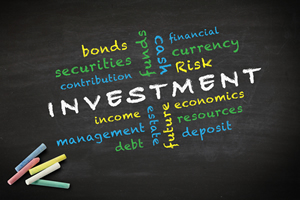Did you see the movie, “Forrest Gump?” If so, you may remember this – one of Forrest’s many profound quotes: “My mama always said, ‘Life is like a box of chocolates. You never know what you’re gonna get.’”
That’s exactly how I feel whenever I field questions for Savvy Ladies’ Financial Hotline; I never know what questions I’m going to get.
Yet, the questions tend to be more similar than dissimilar.
And, they are questions you’re likely to have as well. Which is why I’m giving you a glimpse into my hotline experience this week – by highlighting two callers with similar questions, even though their demographic profiles are as different as different can be. For example:
- There’s a thirty-year age difference;
- They are located in different parts of the country;
- They are of different financial means — one is a millionnaire, the other isn’t; one works with an investment advisor and the other doesn’t – she’s a self-directed do-it-yourselfer.
However despite these differences, they both started our conversation with, “I lost money in 2008, and I panicked and sold most if not all of my stocks.” This was then followed by: How can I get back to investing and not lose what money I have left?
What they didn’t realize is that the underlying premise of their two-part question represented two (2) common money management mistakes…
Mistake #1 – They confused a negative (or low) return with poor performance
Fortunately for you and me they are not one in the same! However, this only holds true if you remember that investment return is not the same as investor return, and you don’t prematurely take action in response to the former.
As you know, the market goes up and down; as does your investment’s market value. But it is false to presume that when the market is down, so is your performance. Or, that when the market is up so is your performance.
Part vs. Whole
I talk about this concept whenever I teach a technical class on investing. And, I like to use the subway as an analogy to illustrate my point. My subway stop is Grand Army Plaza; on the numbers 2 or 3 trains, it’s about seven (7) stops from the first stop in Manhattan – Wall Street. The ride from GAP to WS represents my investor return. However, the end-to-end points on either the #2 or #3 trains represent the entire train route – or investment return.
For these ladies, when the market dropped, they panicked, wanted to feel safe, and sold some or all of their stock – preferring the comfort of cash to watching the market value of their portfolios dip any further. Emotionally, I get it. But by selling as they did, when they did, and why they did, they locked in their “loss” – making it real rather than simply a loss on paper.
Oftentimes, people concentrate on investment performance, when they would be better served by focusing on their performance – aka their part of the train ride!
Into which camp do you fall?
Mistake #2 – They asked the wrong questions
Admittedly, this is a tough one because you don’t know what you don’t know and you don’t know you’ve asked the wrong question until you ask the one you have. Get it?
Here’s how this played out with these two callers:
One caller asked, “How do I invest?” After several follow-up questions to help narrow down this broad question, my suggestion to her was to NOT invest…at least not right now! Not the response she was seeking, but due to her circumstances, her money shouldn’t be in the market. Therefore, a better question for her would have been: “When should I invest?“
The other caller – the one who works with an investment advisor – asked: What should I ask him about his (money management) performance? Here’s what I suggested as a better question: “What will you do to protect me from myself so that when the market dips (as it will), I won’t sell my holdings, convert to cash, and then later regret that choice?
The question you have vs. the one you need
Are you asking the “better” question? How do you know?
In an odd way, investing is like a box of chocolates…you never know what you’re going to get. However, asking better questions and guarding against what I describe as performance disillusion are ways to protect yourself from two (2) common and costly money management mistakes! Plus, you increase the likelihood of you getting more of what you want and less of what you don’t.





